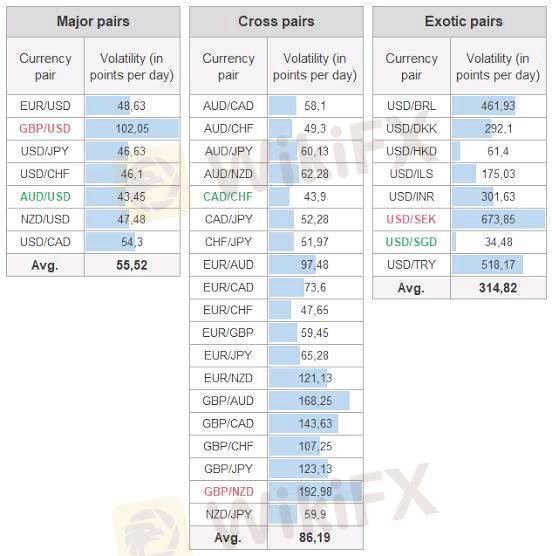
2025-04-28 11:39
IndustryPredicting order book imbalances incurrency market
#CurrencyPairPrediction
Predicting order book imbalances in currency markets is a complex task that aims to forecast situations where there is a significant disparity between the volume of buy and sell orders at various price levels. These imbalances can be precursors to short-term price movements, as a large excess of buy orders may indicate potential upward pressure, while a surplus of sell orders could suggest downward pressure.
Several approaches are used to predict these imbalances. One method involves analyzing historical order book data to identify patterns and correlations between past imbalances and subsequent price changes. Statistical models and machine learning algorithms can be trained on this data to forecast future imbalances based on current order book snapshots. Features such as the volume at different price levels, the spread between the bid and ask prices, and the rate of order book updates can be used as inputs for these predictive models.
Another approach focuses on real-time order flow analysis. By monitoring the continuous stream of incoming orders, cancellations, and executed trades, one can attempt to detect the emergence of significant buying or selling interest that could lead to an imbalance. Analyzing the size and frequency of orders, as well as the behavior of market participants (e.g., the appearance of large "iceberg" orders), can provide clues about potential future imbalances.
Furthermore, some predictive models incorporate external factors, such as news releases, economic data, and sentiment indicators, which can influence order placement and potentially create imbalances. For instance, a positive economic surprise might lead to a sudden influx of buy orders, creating an imbalance on the buy side.
However, predicting order book imbalances in currency markets is challenging due to the decentralized and highly liquid nature of Forex. Unlike centralized exchanges, the complete order book is not always visible, as liquidity is fragmented across various brokers and platforms. This lack of a consolidated view makes it difficult to get a comprehensive understanding of the overall order flow. Additionally, the rapid pace of trading and the influence of high-frequency trading algorithms can lead to быстро changing order book dynamics, making predictions over longer time horizons particularly difficult. Microsecond-level predictions are even more complex and often rely on proprietary algorithms and infrastructure.
Like 0
nico3345
Trader
Hot content
Industry
Event-A comment a day,Keep rewards worthy up to$27
Industry
Nigeria Event Giveaway-Win₦5000 Mobilephone Credit
Industry
Nigeria Event Giveaway-Win ₦2500 MobilePhoneCredit
Industry
South Africa Event-Come&Win 240ZAR Phone Credit
Industry
Nigeria Event-Discuss Forex&Win2500NGN PhoneCredit
Industry
[Nigeria Event]Discuss&win 2500 Naira Phone Credit
Forum category

Platform

Exhibition

Agent

Recruitment

EA

Industry

Market

Index
Predicting order book imbalances incurrency market
 Malaysia | 2025-04-28 11:39
Malaysia | 2025-04-28 11:39#CurrencyPairPrediction
Predicting order book imbalances in currency markets is a complex task that aims to forecast situations where there is a significant disparity between the volume of buy and sell orders at various price levels. These imbalances can be precursors to short-term price movements, as a large excess of buy orders may indicate potential upward pressure, while a surplus of sell orders could suggest downward pressure.
Several approaches are used to predict these imbalances. One method involves analyzing historical order book data to identify patterns and correlations between past imbalances and subsequent price changes. Statistical models and machine learning algorithms can be trained on this data to forecast future imbalances based on current order book snapshots. Features such as the volume at different price levels, the spread between the bid and ask prices, and the rate of order book updates can be used as inputs for these predictive models.
Another approach focuses on real-time order flow analysis. By monitoring the continuous stream of incoming orders, cancellations, and executed trades, one can attempt to detect the emergence of significant buying or selling interest that could lead to an imbalance. Analyzing the size and frequency of orders, as well as the behavior of market participants (e.g., the appearance of large "iceberg" orders), can provide clues about potential future imbalances.
Furthermore, some predictive models incorporate external factors, such as news releases, economic data, and sentiment indicators, which can influence order placement and potentially create imbalances. For instance, a positive economic surprise might lead to a sudden influx of buy orders, creating an imbalance on the buy side.
However, predicting order book imbalances in currency markets is challenging due to the decentralized and highly liquid nature of Forex. Unlike centralized exchanges, the complete order book is not always visible, as liquidity is fragmented across various brokers and platforms. This lack of a consolidated view makes it difficult to get a comprehensive understanding of the overall order flow. Additionally, the rapid pace of trading and the influence of high-frequency trading algorithms can lead to быстро changing order book dynamics, making predictions over longer time horizons particularly difficult. Microsecond-level predictions are even more complex and often rely on proprietary algorithms and infrastructure.
Like 0
I want to comment, too
Submit
0Comments

There is no comment yet. Make the first one.

Submit
There is no comment yet. Make the first one.